ASSISTING AN ELDERLY PERSON AFTER A FALL

MANAGEMENT OF HEEL PRESSURE
CAREGIVER SECTION: YOU ARE IMPORTANT!
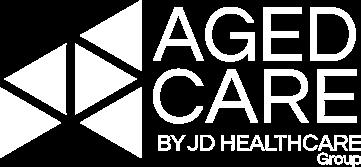
In
this issue
issue two 2023
Welcome to the second edition of our Aged Care Newsletter - The Caregiver’s Compass!




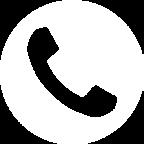
As we continue on our journey of providing valuable insights and solutions within the aged care realm, I am thrilled to present to you an array of topics in this issue that are both pertinent and impactful. At the heart of our discussions lies the crucial theme of manual handling and pressure care, two facets that deeply influence the quality of care we deliver to our elderly residents.
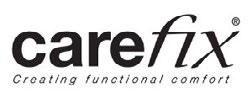
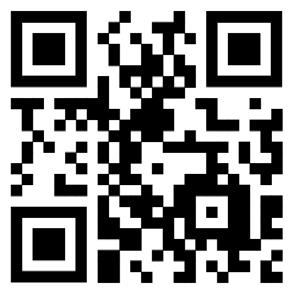

In the pages that follow, we delve into the intricacies of pressure care, shedding light on effective strategies and innovative approaches to ensure the comfort and well-being of those under our care. Fall prevention and pressure injuries, key components of comprehensive elderly care, take centre stage as we explore how best to safeguard the health and dignity of our residents in care.
We take great pride in introducing our latest range of manual handling and pressure care medical devices. These innovative solutions have been carefully sourced from renowned global brands to provide not only ease and efficiency for our dedicated caregivers but also unparalleled benefits for our facilities and, most importantly, the individuals we care for.






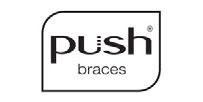







Our commitment to you, our valued partners and caregivers, remains unwavering. As we navigate the ever-evolving landscape of aged care, our team at JD Healthcare Group stands ready to support you in enhancing the lives of our senior community members. It is our hope that the contents of this publication resonate with you as deeply as they do with us.
I extend my gratitude to each one of our customers for entrusting JD Healthcare Group with the privilege of serving your needs and those of your residents. Your trust drives us to continuously innovate and strive for excellence.

Thank you for your time in reviewing issue 2 of the Caregiver’s Compass.
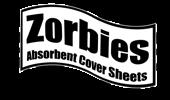



Warm regards,







love to
1300 791 404 marketing@jdhealthcare.com.au agedcare.jdhealthcare.com.au Rod
Business Unit
JDHG Aged Care Division 0439 622 468 CSPHA CERT FIED a fe PatientH d ingAssociat
We would
hear from you!
Bowlden
Manager
Welcome
by
scan to save 2 The Caregiver’s Compass | Issue 2 | September 2023
message
our BUSINESS UNIT MANAGER
About us
JD Healthcare Group is a proudly Australian owned and operated business, with distribution centres in Sydney. JD Healthcare Group will endeavour to source leading edge and innovative products from designers and manufacturers all over the world to ensure that Australians are receiving the best care available globally.
Our Mission
JD Healthcare Group aims to provide products that are relevant, cost effective, ergonomic and trusted by hospital, aged care and emergency workers.
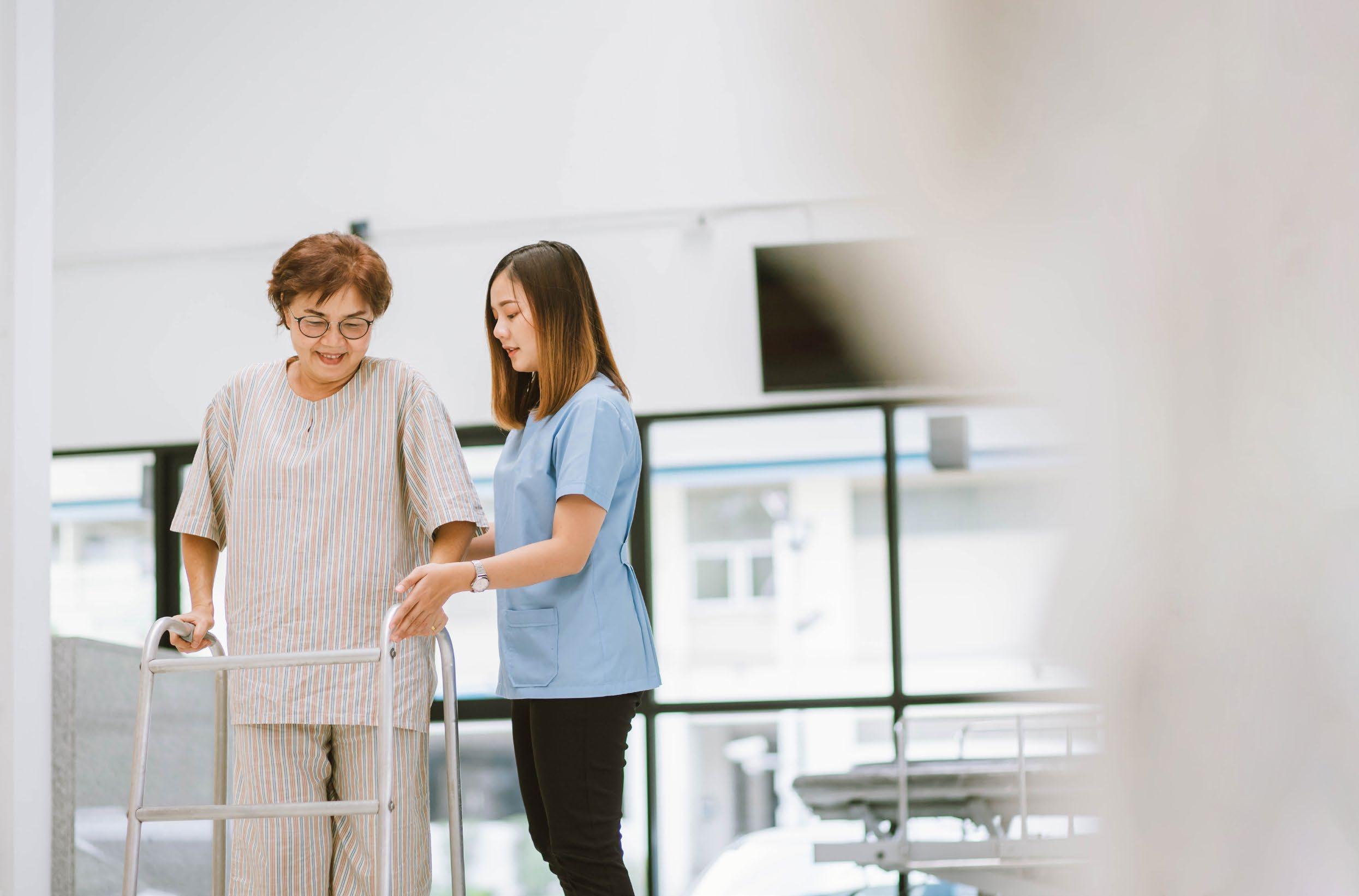



Our commitment
• Best in class product range, sourced from across the globe
• Dedicated customer care and sales support team
• Responsive and quick order despatch
• Support through education and training
MANAGEMENT OF HEEL PRESSURE CAREGIVER SECTION: YOU ARE IMPORTANT! THE care giver’s compass CONTENTS 8 18 ASSISTING AN ELDERLY PERSON AFTER A FALL 4
1300 791 404 | sales@jdhealthcare.com.au 3
Falls prevention STRATEGIES FOR ASSISTING AN ELDERLY PERSON AFTER A FALL: WITH OR WITHOUT SPECIALIST EQUIPMENT



Dealing with a situation where an elderly person has fallen can be distressing. Whether it’s a loved one or someone you care for, it’s crucial to approach the scenario cautiously to avoid causing further harm. This article outlines the immediate steps to take, how to safely assist them from the floor, and when to involve specialist equipment or professional help.

First Steps to Take After a Fall
Before attempting to lift the fallen person, take a moment to assess the situation and ensure there are no apparent signs of injury. This initial evaluation is essential to avoid exacerbating any potential harm. If the person is shocked or agitated, helping them calm down by guiding them to take deep, slow breaths can be beneficial.
For a comprehensive injury assessment, consider using an approved tool such as the one provided by the Department of Health Victoria: https://www.health.vic.gov.au/wellbeingand-participation/falls-prevention-tools
FALLS PREVENTION: LIFT STRATEGIES 4 The Caregiver’s Compass | Issue 2 | September 2023
Lifting Without Equipment
In cases where specialised lifting equipment isn’t available, here’s how you can assist the fallen person in getting up:


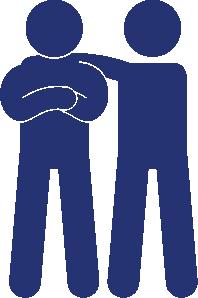
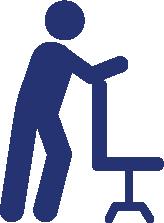
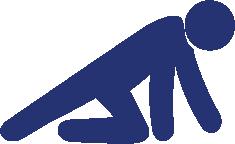

Using Specialised Equipment

If you have access to specialised lifting equipment, utilise the following video resources to guide you:


Watch this video for a visual demonstration:
What to Do Next
Falls among older individuals are taken very seriously by healthcare professionals due to their potentially severe consequences. Therefore, it’s recommended to consult your local GP for guidance on the next steps.
It’s important to note that if they struggle or experience pain, it’s advisable to call emergency services for assistance.
During the consultation, the GP will likely assess the fallen person’s health and balance. If the person is on medication, the GP will review these medications to determine if any side effects contribute to the risk of falling.
*T&C applies. Eligible items: Raizer II, Turn All, HoverMatts/ Slings, Levabo Pressure Care range (minimum spend applies) Note: Offer expires 31.12.2023
 1. Start by instructing them to roll onto their hands and knees.
2. Place a sturdy piece of furniture, like a chair or bed, within reach.
3. Encourage them to grip the furniture securely with both hands.
4. Stand behind them, providing support without lifting, allowing them to gradually rise to a standing position.
1. Mobile Hoist and Sling
2. Raizer II Lifting Chair:
3. HoverMatt SPU & HoverJack
1. Start by instructing them to roll onto their hands and knees.
2. Place a sturdy piece of furniture, like a chair or bed, within reach.
3. Encourage them to grip the furniture securely with both hands.
4. Stand behind them, providing support without lifting, allowing them to gradually rise to a standing position.
1. Mobile Hoist and Sling
2. Raizer II Lifting Chair:
3. HoverMatt SPU & HoverJack
Get $250 OFF* on your first purchase with An Information Byte session 1300 791 404 | sales@jdhealthcare.com.au 5
Additional recommendations could include:
1. EYE TEST: Identifying vision problems through an eye examination.

2. BLOOD PRESSURE CHECK: Assessing blood pressure in various positions.

3. HOME ASSESSMENT: Having a healthcare professional evaluate the living environment for potential hazards and offer advice on fall prevention.
Preparation for Future Falls
While prevention is ideal, the possibility of future falls remains. Consider keeping a falls assessment tool handy for peace of mind. Additionally, many elderly individuals are choosing to have lifting equipment at home to respond quickly and safely to falls, avoiding extended wait times for help. JD Healthcare Group offers Raizer Lifting Chairs, and alternatives such as Hovermatt SPU and Mobile Hoist and Slings are also available



This article provides general information and discussions about fall prevention. The information and other content provided here, or in any linked materials, are not intended and should not be construed as medical advice, nor is the information a substitute for professional medical expertise or treatment. Adapted from felgains.com
 Raizer II
HoverMaTTs
Slings
Raizer II
HoverMaTTs
Slings
6 The Caregiver’s Compass | Issue 2 | September 2023
Mobile hoists
SKIN PROTECTORS BY DERMASAVER


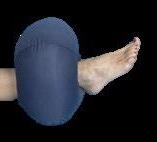
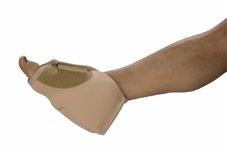


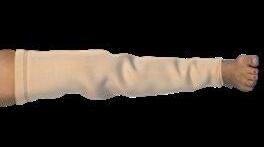

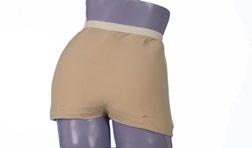
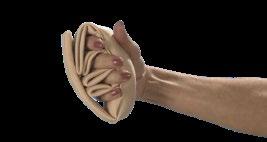

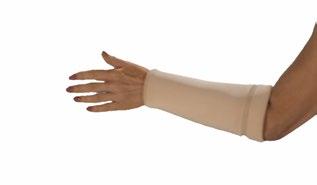
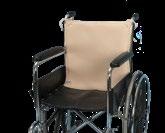

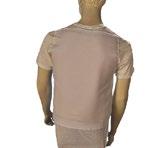
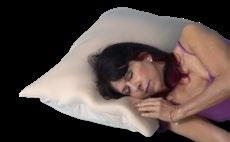

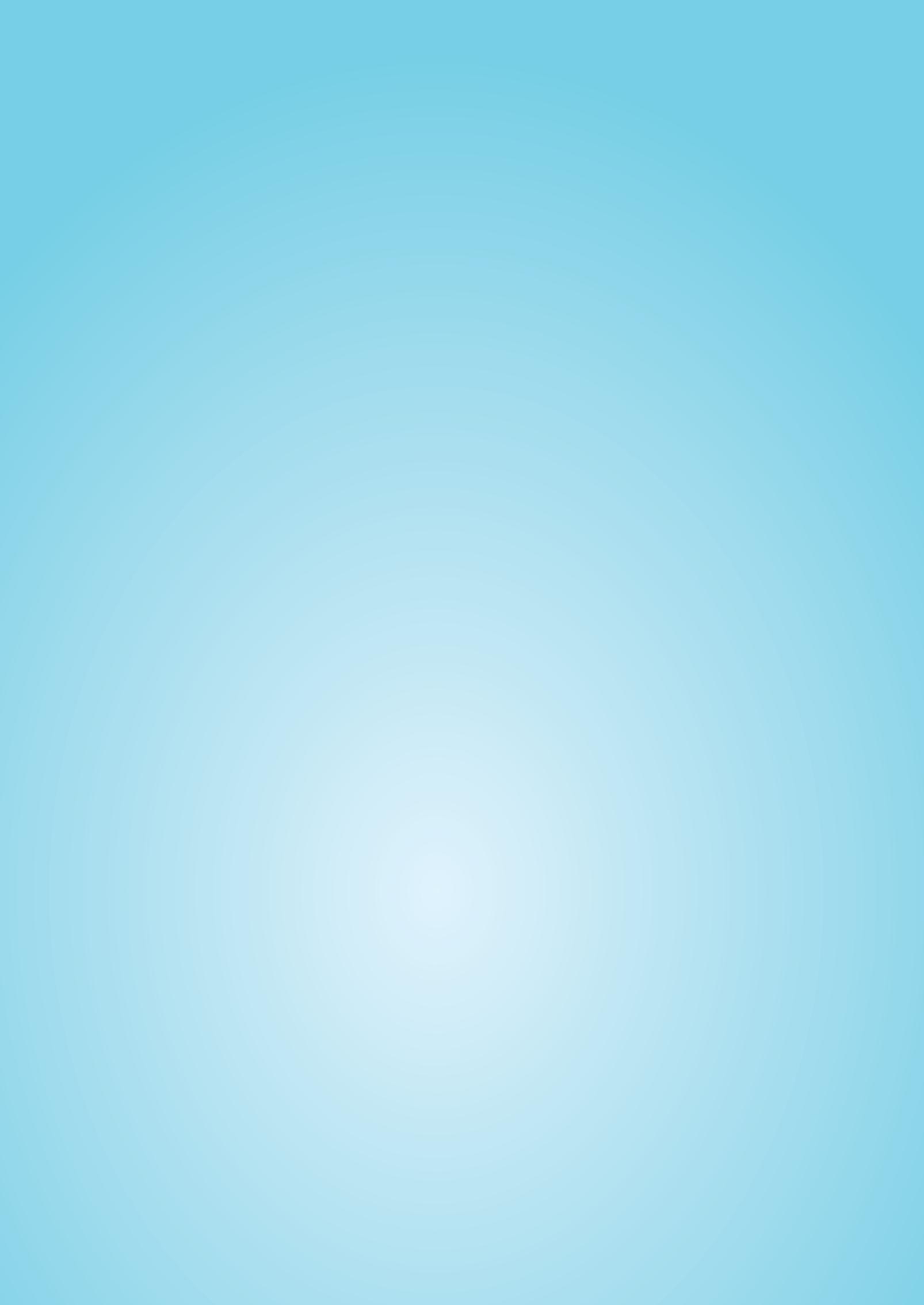
Knuckle Protectors DermaBrief™ Forearm Tubes Pressure Reduction Pads Arm Tubes Pressure Reduction Pads Pressure-Reduction Pillowcase DermaSaver T-Shirt Finger Separators Full Leg Tubes Ankle Bumpers Shin Tubes Stay-Put™ Heel Protectors Heel Elevators
pressure care
MANAGING HEEL PRESSURE AND HOW TO RELIEVE IT
Understanding Heel Pressure
Heel pressure has the potential to result in severe skin injuries behind the heel. If not effectively managed, it can escalate into further ulceration. This is particularly observed in individuals with compromised skin integrity or those who are immobile and confined to extended periods of bed rest. The vulnerability of the area behind the heel stems from the presence of a distinctive ridge on the heel bone, known as the Calcaneus, which protrudes at the back. Additionally, the skin covering this region is
thin and lacks substantial cushioning, such as muscle or fat, that typically shields the bone from direct skin contact.
Heel pressure occurs when individuals lie down, causing the rear of the heel to make contact with the surface of the bed. The weight of the leg applies pressure to the back of the heel, an area with limited padding or resistance to pressure. Even slight movement of the heel against the bed leads to shear stress on the skin, resulting in redness and inflammation.

UNDERSTANDING HEEL PRESSURE 8 The Caregiver’s Compass | Issue 2 | September 2023
Heel pressure-related concerns are prevalent across various groups. Prolonged bed rest is a common scenario in which heel pressure can manifest. The protective skin in this region is thin, with minimal soft tissue in the form of tendons or muscles safeguarding the underlying bone. When individuals experience compromised skin integrity and are largely immobile, they spend extended periods in bed. Considering their resting position, the heels are in direct contact with the bed’s surface. The slightest movements during this time contribute to ongoing shear pressure on the bedding, potentially causing pressure injuries within a matter of hours. This could manifest as a reddish blemish, similar to the experience of developing a blister from new shoes, or progress to a burst blister and eventually transform into an ulcer.
Symptoms and Underlying Causes
As previously mentioned, initial signs of pressure may present as discolouration on the heel, characterised by shades of red, purple, or blue. This discolouration is akin to a bruise, resulting from blood accumulation at the skin’s surface. It’s also probable that fluid will accumulate within the skin, resembling a blister. Once the skin breaks, the person becomes susceptible to infection or tissue necrosis.
There are several known factors that increase a patient’s risk of developing a heel pressure ulcer, including:

c Inadequate/malnutrition - Poor vitamin intake and absorption from food can lead to thinning of the skin and therefore decreased blood flow.
c Advancing Age - Elderly people who spend an increased amount of time in bed can lead to shear and pressure in areas of poor skin integrity.
c Abnormalities of circulation - This may be due to vascular issues where blood flow is limited to the extremities and a lack of red blood cells to an injury will delay healing. This is also common in patients with diabetes.
c Sensory deficiency - For example, people with diabetes who may experience nerve damage are at increased risk of pressure sores. Nerve damage causing loss of sensation is called Diabetic Neuropathy.
c Immobility - May be caused by paralysis, stroke or severe illness. Fractures of the bones in the legs may
also lead to immobility for a period of time. Common fractures to occur are the neck of the femur (NOF) fractures also known as a broken hip
c Major surgery - Heart, lung and some orthopaedic surgeries restrict mobility and hence increase time in bed. Long periods of time laying in bed increase chances of pressure sores.
c Multiple health problems (comorbidities) - Particularly coronary or respiratory can lead to long term bed rest. Long periods laying in bed increases the chances of pressure sores.
c Dehydration - Hydration is vital for maintaining skin integrity and wound healing. Adequate fluid intake is necessary to support blood flow to wounded tissues and to prevent additional breakdown of the skin.
Treatment & Prevention
Offloading is described as lifting or pushing an area of high pressure away from the cause of the pressure. To offload is to distribute the load to other areas which are not susceptible to pressure areas. Both the calf and foot can help with the offloading. Heel pressure is redistributed to both the calf, a soft muscle belly which can change shape to fit a supportive device as well as the foot.
1300 791 404 | sales@jdhealthcare.com.au 9
Explore Heel Up Heel Lifter range for short term or longterm pressure offloading of the heel.
Developed in collaboration with leading wound care nurses, Levabo Heel Up ® range are the perfect solution for preventing pressure ulcers. They are single-patient use which are ergonomically designed to provide good stability and support. The Heel Up range is suitable for hospitals, aged care and home care and are available in range of sizes, with an inflation device included in each box.



More about Heel Up heel lifters
c Heel Up is a single-patient product but can be used for the same user over a longer period. It can be wiped with a damp cloth, alcohol or other suitable disinfectant. Both ensures high hygiene.
c Heel Up heel lifters are not inflated upon delivery and therefore take up very little space. This makes it easy to keep in storage and bring them to the user.
c Supplied in clean, sealed flat pack including inflating device.
c Heel Up is inflated using the supplied inflator tube or with one of Levabo’s other pumps. An adapter is also included to adjust the air pressure.

c Skin friendly for sensitive skin: Tested and approved according to irritation and hypersensitivity test, ISO 10993-10:2010. The product is also CE approved.
Who benefits from a Heel Up heel lifter?
The target group for a heel lifter is people who have or are at risk of developing pressure ulcers, especially people with reduced mobility and bedridden people.


Risk groups typically include people who are:
c overweight
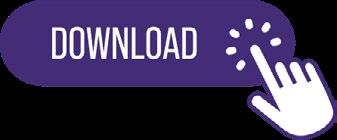
c underweight
c older
c critically ill
c palliative
c spinal cord injured
Heel Up ® has some important features that provide a number of advantages
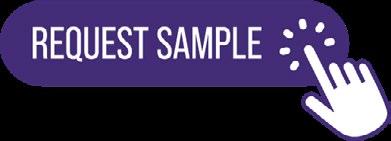
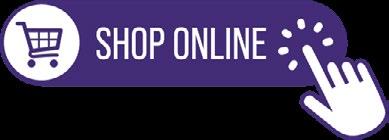
Drainage of heat
Drainage of moisture
Lightweight
No drop foot
Malleolus
Heel
Achillies
Levabo medico cushions ®
10 The Caregiver’s Compass | Issue 2 | September 2023
Request a sample from: sales@jdhealthcare.com.au
As people get older their skin begins to change. Aged care workers have been accustomed to dealing with these changes to elderly people’s skin by moisturising and protecting the limb from the environment. This process has worked quite well in the past - but there has always been a concern with the type of elastic bandages used to keep the moisture in - this is where Protect-a-Limb® steps in.
This exciting product has been designed to take the bumps and bruises out of life due to its durability, high comfort level, easy application, and soft to touch and feel against the skin - not to mention, it’s extremely cost effective - making it a must in every aged care facility.
Protect-a-Limb® is an Australian made healthcare product designed and tested in Australian conditions. It has been engineered to ensure the person requiring the garment remains cool in summer and warm in winter - a necessity in our harsh Australian climate.
The “cool in summer and warm in winter” element of Protect-aLimb® is achieved by the unique Coolmax ® System. Coolmax®, which is a registered trademark of INVISTA, is a channelled synthetic fibre on the inner of Protect-a-Limb ®, surrounded by cotton on the outer surface which is slightly retentive.


Coolmax®:
• Dries faster than other fabrics
• Is cost effective - saving time in application

• Gives protection against friction to vulnerable limbs
• Aids in patient comfort
• Wicks away moisture and prevents maceration
• Is hygienic - can be washed as easily as a pair of socks
• Has sealed ends to prevent fraying
Protects the limbs from skin tears and skin damage! It is light in weight and yet bulky enough to work!
Preventing a fall is easier than recovering from one
Fall Prevention Strategies for Common Risk Factors
Falls, whether occurring at home or within aged care facilities, share similar risk factors that can lead to serious injuries like fractures and head trauma. Implementing a combination of strategies is essential for effective fall prevention:


Enhancing Mobility Through Exercise:
Regular physical activity, emphasising functional strength and balance exercises, plays a pivotal role in reducing fall risk by up to 23%*. Incorporating routines like tai chi and tailored exercises, even for those with limited mobility, aids in enhancing overall stability.

Evaluating Foot Health and Footwear:
The choice of footwear and foot health significantly impacts balance. Seeking guidance from a podiatrist to assess foot condition and opting for appropriate footwear, such as athletic shoes with proper support and non-slip features, greatly reduces fall potential.
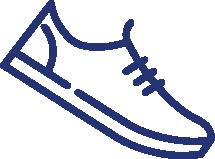
Alleviating Dizziness Symptoms:
Addressing dizziness, which becomes more prevalent with age, is vital to prevent falls. Timely medical evaluation and management of underlying causes can mitigate this risk.
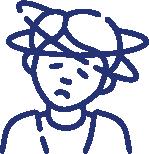
12 The Caregiver’s Compass | Issue 2 | September 2023
Reviewing Medication Usage:
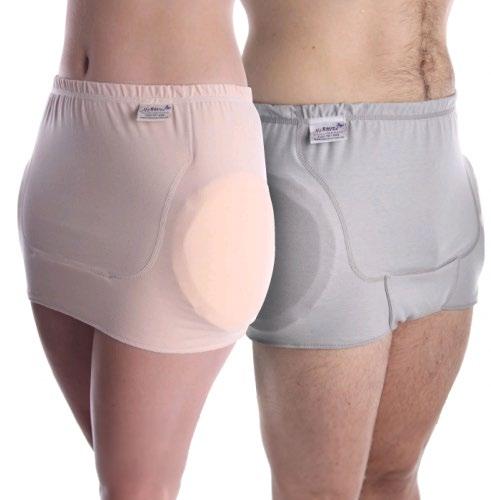


Regular medication reviews, particularly for individuals aged 65 and above, are crucial. Awareness of potential medication interactions, side effects like dizziness, and sedative effects can effectively reduce fall-related risks.

Screening for Vision Issues: Routine vision screenings are pivotal in identifying visual changes related to aging. Various eye conditions, such as glaucoma and macular degeneration, necessitate tailored fall prevention measures to ensure safety.


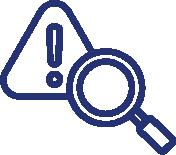
Assessing Living Conditions: Modifying living spaces significantly impacts fall risks. Strategies like improving lighting, providing assistive devices, installing secure handrails, rearranging furniture, and addressing wet surfaces greatly reduce hazards.

*Orders placed on the Aged Care by JD Healthcare Group website. T&C applies; offer valid until Nov 30, 2023
Save 15% The Original & Genuine Soft Hip Protector The Preferred Method of Hip Fracture Prevention and Hip Injury Prevention Use discount code: SAVE15HIP
Comprehensive integration of these strategies yields a substantial reduction in fall risk and contributes significantly to improving the overall well-being and safety of older individuals.
Pressure Care
TRANSFORM A STANDARD BED INTO AN AUTOMATED LATERAL TURNING BED

The new Levabo Turn All™ lateral turning system has been developed to assist clinicians and carers in the acute, aged, community and home care settings. It is designed to streamline the delivery of consistent and effective pressure care for vulnerable immobile patients, with pre-existing pressure injuries, as
well as providing protection for those at risk of developing them. This is achieved by automating the process of gently and regularly repositioning these patients by rolling them into a 30° side-lying posture, on both sides of the body, for a set period of time. Carers are given a choice of 3 cycle times for improved pressure care options.

Clinical Guidelines
Clinical practice guidelines recommend regular repositioning at least every two hours for patients with reduced mobility (NICE GUIDELINE 2015).The 2019 International pressure injury guidelines ( EPUAP,NPIAP, PPPIA) recommend the use of the 30° side lying position.
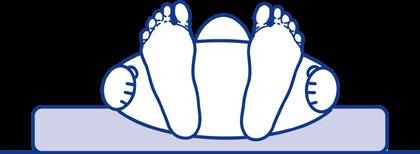
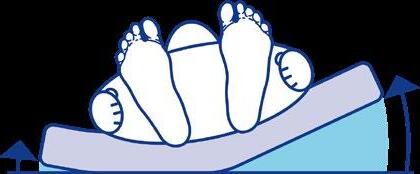
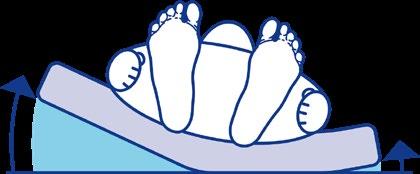
as seen in...
Aged Care Australia



Magazine Issue 1 - 2023
Page 125
TURN ALL TURNING DEVICE
14 The Caregiver’s Compass | Issue 2 | September 2023
Control Panel for Turn All Pump 3C
Simple to use digital controls featuring –
• On / off switch
• Selection buttons for three turning cycles - 30/30, 60/60 or 90/90 minutes.
• + / - buttons to set total hours for automated operation (max 24 hours)
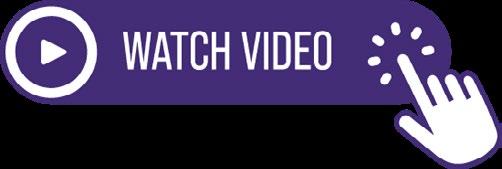
• Digital readout displaying number of hours of automated operation still to complete
Turn all Key features
Fits On Most Beds
• Designed to be positioned under a static or dynamic mattress, on a standard bed, with or without electric profiling

Consistent and Controlled Turning
• The system automatically rolls the patient into a sidelying position, gently and quietly, reducing the need for manual handling intervention from care givers.

Side Support Function

• The Side Support function is a safety feature that reduces the risk of skin shear, while increasing the patient’s feeling of security, by slightly raising the edge of the mattress on the side they are being gradually and gently rolled towards


• Maximum User Weight:
» Turn All™ Standard - 225kg (200cm L x 85cm W x 15cm H)
» Turn All™ Bariatric - 400kg (210cm L x 110cm W x 15cm H)
1300 791 404 | sales@jdhealthcare.com.au 15
Benefits of the Turn All™ System
• Comprehensive pressure relief
• Assists in protecting ‘at risk’ immobile patients from developing pressure areas
• An effective aid in the treatment of patients with pre-existing pressure injuries

• Comfortable and doesn’t interrupt normal sleep pattern
• Almost silent operation
• Significantly reduces the risk of manual handling injuries, for health care staff, especially when caring for patients of significant size
• Gentle and comfortable repositioning, even for palliative care patients experiencing pain
• Side support function reduces the risk of shear, while providing reassurance to the patient, as they are being gently and regularly repositioned

• Improved microclimate and blood circulation
• Designed to function underneath a removable mattress, on a wide range of standard care beds

• Provides consistent “head to toe” support

• Significantly decreases the time carers need to dedicate to manually turning the patient, greatly reducing their exposure to the risk of injury
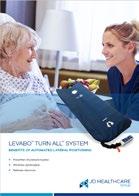
Turn All Multi-Patient System - includes internal lifting cells, combination Cover with removable 2 way stretch, vapour permeable and water repellent, PU coated blue polyester knit fabric upper + black 600D TPU coated Dacron fabric base and three cycle Pump
Bariatric Turn All Multi-Patient System - includes internal lifting cells, combination Cover with removable 2 way stretch, vapour permeable and water repellent, PU coated blue polyester knit fabric upper + black 600D TPU coated Dacron fabric base and three cycle Pump 3C
Combination Cover for Turn All System with removable 2 way stretch, vapour permeable and water repellent blue PU coated polyester knit fabric
Cover for Bariatric Turn All System with removable 2 way stretch, vapour permeable and water
TURN ALL PRODUCT RANGE SYSTEMS Product Name Product Code Size Description SWL Turn All Multi-Patient System w/ TPU Base and Pump 3C PCLV-70128 200cm L x 85cm W x 15cm H
225kg Turn All Bariatric Multi-Patient System w/TPU Base and Pump 3C PCLV-70098 210cm L x 110cm W x 15cm H
3C
400kg REPLACEMENT PARTS Product Name Product Code Size Description SWL Turn All Lifting Cells for MultiPatient System PCLV-70113 200cm L x 85cm W x 15cm H Nylon internal lifting cells for Turn All Multi-Patient System 225kg Turn All Lifting Cells for Bariatric Multi-Patient System PCLV-70131 210cm L x 110cm W x 15cm H Nylon internal lifting cells for Bariatric Turn All MultiPatient System 400kg Turn All Cover w/TPU Base PCLV-70114 200cm L x 85cm W
upper
black 600D
Dacron
base N/A Turn All Bariatric Cover w/TPU Base PCLV-70126 210cm L x 110cm W Combination
polyester knit fabric upper + black 600D TPU coated Dacron fabric base N/A Turn All Pump 3C PCLV-76117 27cm L x 10cm W x 13cm H Turn All pump (three cycle) N/A
+
TPU coated
fabric
repellent blue TPU coated
16 The Caregiver’s Compass | Issue 2 | September 2023
Slip-resistant Socks



Designed for loose comfort around the ankle, the slip-resistant pattern featured on these socks helps to reduce the risk of injuries associated with slipping and falling. Commonly known as non-slip or grip socks, they offer a secure fit, ideal for healthcare settings.













Economy
Sargent Stripe
Economy
Ankle Length
Economy
Ankle Length
Large 10-13
XLarge
Large 9-12 Large
Small 6-9
1300 791 404 sales@jdhealthcare.com.au
Medium
You are important STRATEGIES TO REDUCE STRESS FOR CAREGIVERS
Did you know that there’s a specific term used to describe the burnout often experienced by senior caregivers? Widely recognised in the healthcare community, this phenomenon is referred to as caregiver syndrome , caregiver fatigue , or caregiver stress . While these terms are sometimes used interchangeably, they haven’t yet been formally included in the Diagnostic and Statistical Manual of Mental Disorders.
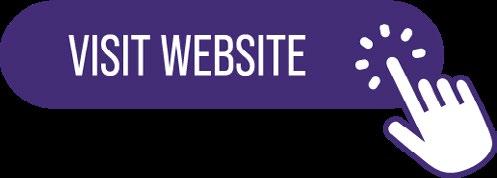

Regardless of the terminology employed, the symptoms of caregiver stress are real and encompass a range of physical and psychological challenges. These can include issues like insomnia, depression, fatigue, emotional overeating, weakened immunity, and a higher risk of chronic conditions like high blood pressure, elevated cholesterol, and other ailments. Unfortunately, caregivers’ own health often takes a back seat for extended periods. Recognising these symptoms and seeking help is of paramount importance.
Fortunately, there is assistance available for senior caregivers through various avenues. Though it might feel challenging to ask for help, numerous programs and services are dedicated to alleviating caregiver stress. Embracing support from others, such as respite care, transportation services, meal preparation, social activities, and other community resources, can significantly lighten the burden and stress experienced by caregivers. Check out: NSW Carer Gateway.

FOR CARERS: YOU ARE IMPORTANT! 18 The Caregiver’s Compass | Issue 2 | September 2023
STAY CONNECTED TO OTHERS
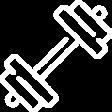
Sharing experiences with others can help caregivers manage stress, reduce feelings of isolation, and recognise that they are not alone. Caregivers should find someone they can talk to about their feelings like a therapist, a fellow caregiver, clergy, friend or family member.
FIND RESPITE SOLUTIONS
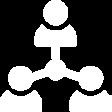


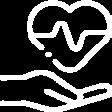

Get a break for a few hours, a few days or even longer. Respite is offered in or outside the home, in a community or faith-based agency or organisation, at an adult day care program, in a hospital or healthcare facility, a nursing home, an assisted living facility, or adult foster home. Family members, friends or neighbours may also be available to act as a respite provider.
STAY HEALTHY
Reactions to stress can include lack of sleep, overeating, undereating, increased alcohol consumption and smoking. Be aware of these detrimental responses and receive regular health check-ups to ensure good health practices.
SEEK AND ACCEPT HELP
Speak up when you need support or assistance. Join a support network. Help can come from community resources, online support forums, local groups and professionals. Consider getting help to manage meals, transportation, social activities, and services to assist with other daily needs.
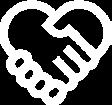
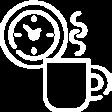
PRACTICE SELF-CARE
Don’t forget to participate in enjoyable or relaxing activities. Partake in a social outing or a hobby such as art or another creative endeavour. Read a good book, listen to music, watch a movie or relax in a warm bath. Regular self-care is a must for caregivers!
KEEP A POSITIVE PERSPECTIVE
Striving to maintain a positive outlook can make a real difference. Writing in a gratitude journal or simply choosing to focus on the good in daily situations can help to reduce negative thoughts and feelings resulting from stress or overwhelm.
GET EDUCATED
It can help to talk to medical staff about options that are available for every stage of aging or disease. Area Agencies on Aging, Aging and Disability Resources Centres, Aging Info and Referral services, and other programs are trusted community links to information and services for older adults and their caregivers.
EXERCISE REGULARLY
A quick 10-minute walk outside can help improve mood, offer fresh air and a change of scenery. Daily exercise breaks can change a hectic pace and mindset. Yoga and stretching can also relax the mind and reduce the feeling of overwhelm and stress.
MEDITATION & BREATHING PRACTICES
There is increasing evidence that mindful meditation can help ease psychological stresses like anxiety, depression, and pain. An effective relaxation method developed at Harvard Medical school involves deep breathing exercises.

The symptoms of caregiver stress are real and encompass a range of physical and psychological challenges.
9 ways to reduce stress for caregivers
*Adapted from SeniorAdvice.com 1300 791 404 | sales@jdhealthcare.com.au 19
*
Hernia
& Ostomy
CORSINEL REGULAR UNDERWEAR IS DESIGNED TO PROVIDE OPTIMUM FIXATION AND SUPPORT OF AN OSTOMY POUCH
Corsinel, a brand under the Tytex Group, is dedicated to enhancing the lives of ostomates and individuals seeking support for their hernias. Their vision is simple: to enable people with stomas to live life on their terms, offering topquality ostomy support garments that elevate their well-being.

Living with an ostomy brings significant changes to one’s daily life, affecting social interactions, body image, and self-esteem. Additionally, abdominal surgeries may raise the risk of hernias,
causing inconveniences like ill-fitting ostomy appliances, leakage concerns, discomfort, and a diminished sense of confidence.
Recognising these challenges, Corsinel is committed to providing exceptional support. Our comprehensive range of hernia management underwear is designed like regular underwear, ensuring utmost comfort. With various support level options available, our products cater to every need,
empowering users throughout the day, in any situation.
Corsinel support underwear is specially developed to provide additional fixation and support of an ostomy pouch. The underwear also supports and relieves a parastomal hernia, umbilical hernia, epigastric hernia or abdominal scar hernia. The support from the underwear offers relief, alleviation, assists mobility, counteracts sense of gravity, thereby providing pain relief. The underwear
CORSINEL HERNIA & OSTOMY UNDERWEAR
20 The Caregiver’s Compass | Issue 2 | September 2023
may also reduce the risk of developing a hernia.
Wearing the underwear can help makes daily and strenuous activities easier to perform. The underwear enhances a smooth appearance, providing discretion and encouraging participation in social life.
The strong upper part of Corsinel Regular underwear supports the pouch and/or hernia. The lower part is in a softer material that makes the garment easier to put on and take off.
The underwear has 4-way-stretch, which provides perfect adaption to body contour. Skin- friendly material prevents allergic reaction, redness or skin irritation in general. Seamless knitting ensures optimum wearer comfort. The underwear is designed for use day and night.
The Corsinel underwear is available in a low and a high model. For recommendation on height and use, please contact your doctor or nurse.

Living with an ostomy has a great
impact on a person’s everyday life. An ostomy challenges a person’s social life, body image and sense of self-esteem.
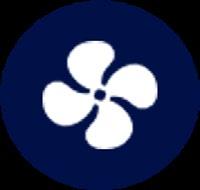
With or without surgery, this common condition requires special attention and support. Therefore, all products in the Corsinel underwear product portfolio for hernia management is designed like normal underwear and is comfortable to wear. The users have possibilities of choosing between a variety of support level options enabling support at any time of the day and in any kind of use situation





4-way stretch for optimum fixation and freedom of movement

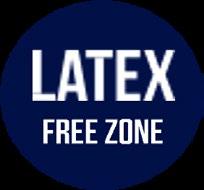
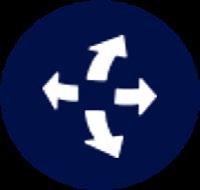
100% seamless knitting prevents skin irritation for highest user comfort

Air and moisture
material
permeable
Boxers available in Low or High Waist Briefs available in Low or High Waist Upper part has enforced support area Medium support for hernia management and prevention Lower part is soft and flexible Save 15% * Use discount code: SAVE15 *T&C applies; offer valid until Nov 30, 2023 Breathable 4-way Stretch Latex Free Seamless 1300 791 404 | sales@jdhealthcare.com.au 21
If so, book an ‘Information Byte’ session with one of our dedicated Pressure Care Specialists and find out more about our business, our manual handling product range, your support team and ordering process.





Information Byte is available in person and/or online. visit our website to: Click


View our range of products Download product flyers View your support team BYTE nformation Looking for clinically effective manual handling solutions? Lets talk pressure care | 1300 791 404 | sales@jdheathcare.com.au
or scan to book a session



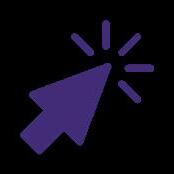


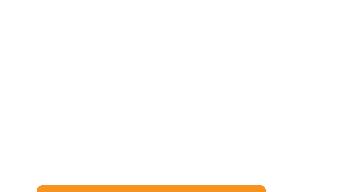

Discover and connect with providers from aged care, disability and in-home support through to education, mobility, mental health, social, recreational services and more. see you at Care Expo & ACCP! Sign up & Stay Updated FREECALL 1800 671 588 | CareExpo.com.au MAJOR CARE EVENTS CARE CARE AUGUST 2023 Showgrounds, daily CareExpoAus @australianevents CareExpoMelbourne.com.au SEPTEMBER 2023 Brisbane Convention & Exhibition @australianevents CareExpo CareExpoBrisbane.com.au 10th - 11th NOVEMBER 2023 International Convention Centre, Darling Harbour 9:00am – 4:00pm daily f CareExpo i CareExpoAus y @australianevents l CareExpo CareExpoSydney.com.au MELBOURNE BRISBANE SYDNEY Connecting you to the care community for Find out more Find out more Health•Seniors•Disability•Aged•Support•Wellness JD Healthcare Group Booth Number: P393 JD Healthcare Group Booth Number: 166



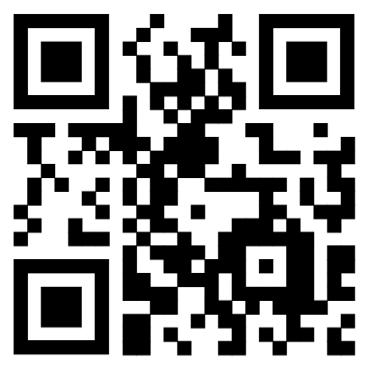




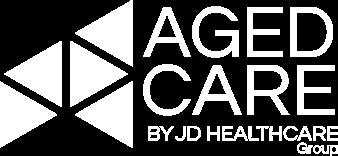
0439 622 468 rod.bowlden@jdhealthcare.com.au 0447 363 205 stephen.mcmahon@jdhealthcare.com.au scan to save scan to save 3/22 Beaumont Rd, Mt Kuring-Gai, 2080 Australia | sales@jdhealthcare.com.au | 1300 791 404





















































 1. Start by instructing them to roll onto their hands and knees.
2. Place a sturdy piece of furniture, like a chair or bed, within reach.
3. Encourage them to grip the furniture securely with both hands.
4. Stand behind them, providing support without lifting, allowing them to gradually rise to a standing position.
1. Mobile Hoist and Sling
2. Raizer II Lifting Chair:
3. HoverMatt SPU & HoverJack
1. Start by instructing them to roll onto their hands and knees.
2. Place a sturdy piece of furniture, like a chair or bed, within reach.
3. Encourage them to grip the furniture securely with both hands.
4. Stand behind them, providing support without lifting, allowing them to gradually rise to a standing position.
1. Mobile Hoist and Sling
2. Raizer II Lifting Chair:
3. HoverMatt SPU & HoverJack





 Raizer II
HoverMaTTs
Slings
Raizer II
HoverMaTTs
Slings

























































































































